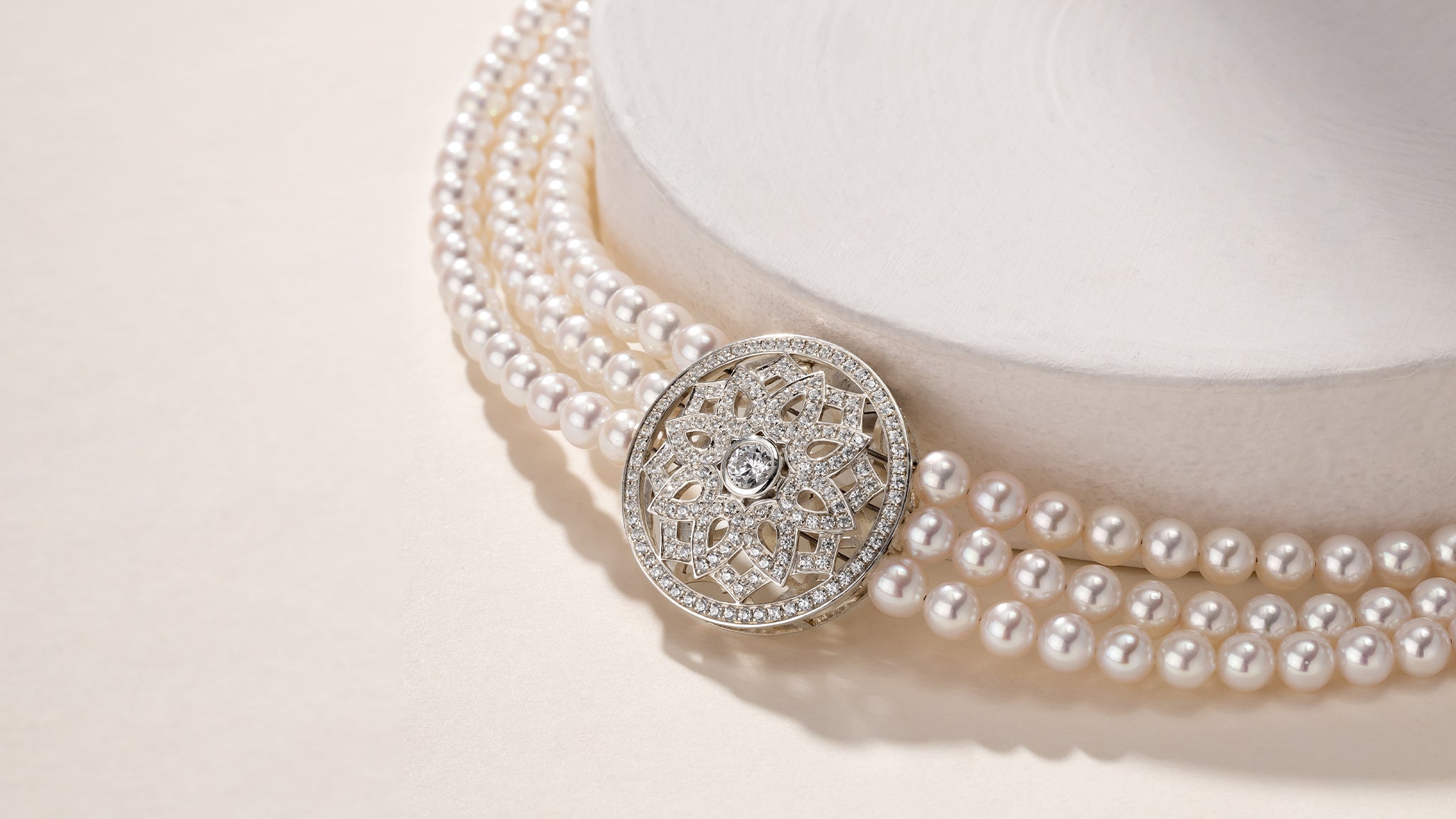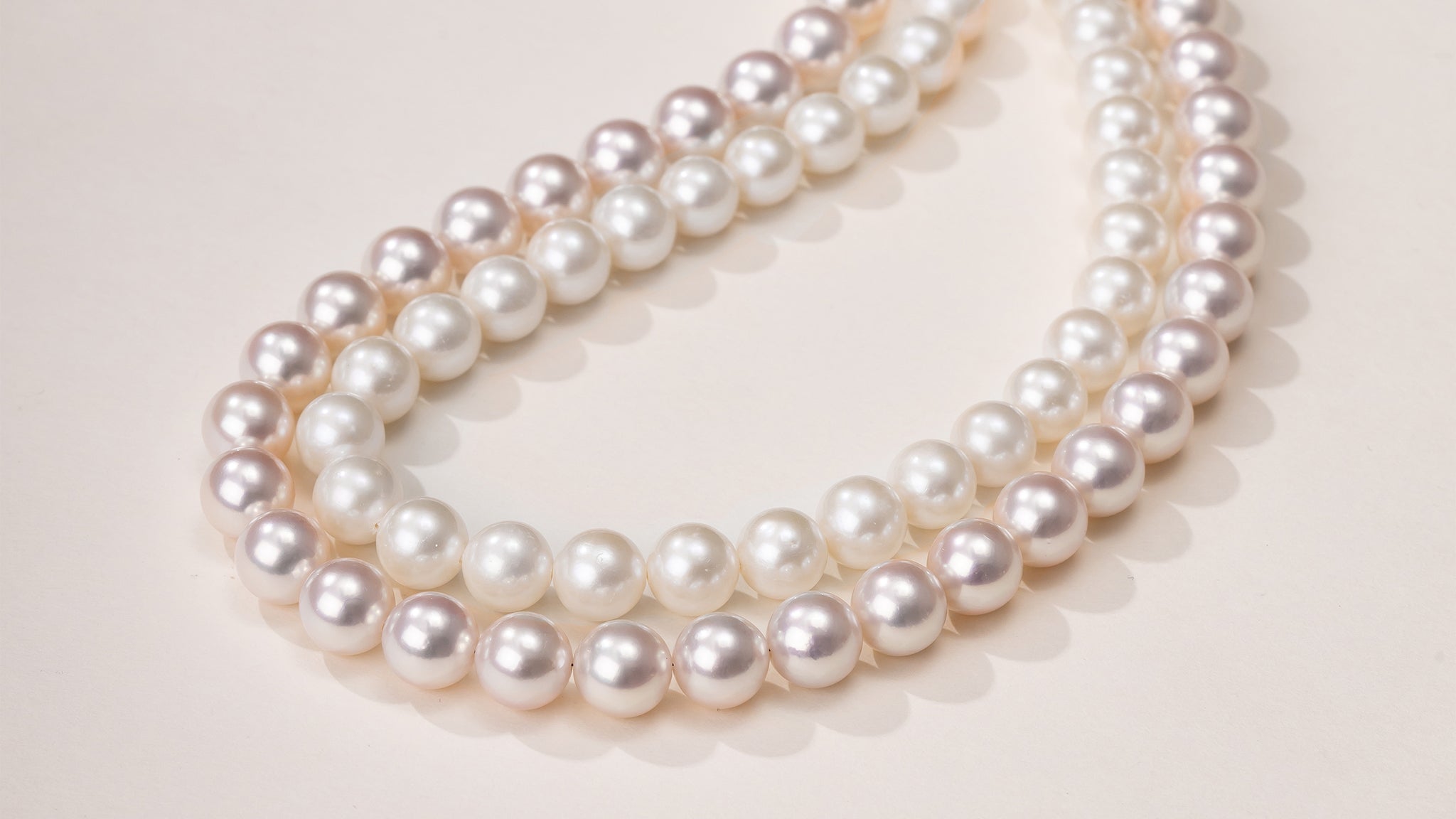Why Choose Saltwater Pearls Over Freshwater Pearls?
Saltwater pearls are one of the miracles of the Creator, and they are carefully crafted works of art deep in the ocean.
Throughout centuries of human history, pearls have been widely acclaimed and coveted worldwide for their enduring sophistication, mesmerizing iridescence, and a kaleidoscopic array of colors, rendering them an emblem of prestige and refinement within the realm of haute jewellery and among discerning collectors.
Indisputably, they stand out as one of the most sought-after and cherished gemstones across the globe, commanding values that may range from a modest $100 to several thousand or even millions of dollars.

Let us discuss the topic “Why choose seawater pearls” from the following two aspects:
"What is the difference between saltwater pearls and freshwater?" and "How to measure the value of pearls?"
What is the difference between saltwater pearls and freshwater?
When it comes to buying pearls, there's one question you must know the answer to first: Do you want to buy saltwater pearls or freshwater? What is the difference between saltwater pearls and freshwater pearls?

We put the two in these characteristics for comparison.
Appearance Shape
Although both varieties share most of their chemical and physical properties, the saltwater pearls have historically set the standard of beauty for the appearance of all pearls. Natural freshwater pearls usually have more irregular shapes. Saltwater pearls have set the traditional standard for the round white pearl. Saltwater pearls have a bead nucleus. This makes the pearl much more likely to be round than freshwater. Freshwater pearls have a nucleus made of a tiny flake of mother of pearl. This means that the pearls can be any shape, from perfectly round to baroque (misshapen), depending on how the mussel host reacts. However, natural pearls of any kind very rarely occur in perfectly round shapes.

Different Product Cycles
For the most part, saltwater pearls farm use oysters, and freshwater use mussels. Generally, it takes 3-5 years or even more than 5 years for an oyster to breed a pearl, and not every pearl produced is of excellent quality. Saltwater oysters produce no more than one or two pearls at a time. Saltwater pearls are produced by oysters found in the sea and generally only a single pearl per shell is found. Freshwater mussels can produce up to 50. Most producers do limit the number of nuclei injected to less than that, however. This number reduces further if the pearl has a longer growing time. This also shows the uniqueness of each saltwater pearl.

Growth Environment
The saltwater oysters envelop the nucleus in a pearl sac and then begin to secrete layers of nacre around the bead, gradually smoothing over the irritant and eventually forming a beautiful pearl. Saltwater pearl, born in the vast expanse of the ocean, is enriched with natural minerals and nutrients, imbuing them with unparalleled moisturizing properties. In contrast, freshwater pearls are cultivated in inland bodies of water such as lakes or artificial ponds, lacking the abundant trace elements found in their oceanic counterparts. The different environments result in variations in the texture, size, and shape of the pearls.

Luster Level
The nucleus inserted into a saltwater oyster will usually be larger than that put into a freshwater mussel. As a result, the nacre which makes up a freshwater pearl is much thicker than that of a saltwater pearl. Given that the quality of the pearl layer is what defines a pearl, you might think this is a good thing, but it is not necessarily the case. The thinner nacre of the saltwater pearl has a much better luster than its freshwater equivalent. The thicker nacre on the freshwater pearl makes it duller and less attractive. They are still beautiful, but not like a saltwater pearl.

Hand Feeling
Pearls cultivated in saltwater have a brighter and more translucent luster, because their edges possess a porcelain-like quality. Speaking of the difference in tactile sensation, when you hold saltwater pearls and freshwater pearls together in your hand, you can distinctly feel the contrast between the two.

Durability
Although freshwater pearls and saltwater pearls have similar levels of hardness, the latter outshines the former in terms of resistance to corrosion and acid-base properties. This distinction can be entirely attributed to the different environments in which they grow. However, both types of pearls require proper care to maintain their beauty and longevity.


How to measure the value of pearls?
A pearl’s value is based off 7 Value Factors. These are: Luster, Shape, Size, Surface quality, Color/Overtone, Matching and Natural or cultured pearls.

The pricing of every pearl is determined by the assessment of its attributes on a scale comprising 7 criteria.
LUSTER stands out as the most crucial attribute among all of them.
If a pearl has a bright, clear, sharp and luminous luster, it is beautiful and therefore valuable. If a pearl exhibits a dull, soft or chalky sheen, the pearl is less beautiful and its value will naturally be downgraded.

Luster is what makes or breaks pearls as precious gemstones. Regardless of the type of pearl, the more lustrous the pearl, the more valuable it is. The thicker the nacre layer, the more the pearl will exhibit its famous “glow from within” , and the sharper the luster will be.

One contributing factor is that Akoya pearls are cultivated in the chilly waters of the Pacific Ocean located in Japan. The cooler temps slow down the oyster’s metabolism, which causes the nacre layers to be very densely compacted around the nucleus. Akoya pearls are recognized for their exceptional reflectivity, as peering into the surface of an Akoya pearl is a lot like looking into a mirror. You’ll be able to recognize your facial features: the shape and most details of your eyes, your nose, and your smile. Similar to other pearls, the higher the quality and luster, the more intricate your reflection will appear.
SHAPE is the second most important attribute.
The majority of people desire and identify the classic pearl shape:Perfectly Round. Pearls with perfectly round shapes are scarce and comprise only a tiny percentage of the yearly pearl harvest. These pearls are more highly valued than any other pearl shape.
Truly round pearl shapes represent less than
0.05% of each year’s pearl harvest; this shape is extremely rare.
Very Near True Round pearls (our AAAA Quality Freshwater pearls) represent approximately 1% of each harvest.
Slightly Off-Round Pearl Shapes (our AAA Quality) account for 5%. These pearls would be generally round to the eye upon casual inspection.
Symmetrical Drop-Shapes and Potato pearls are about 10-20% of each pearl harvest.
Baroques and Rice Crispy pearls make up the rest of the yearly yield, around 80-90%.These are important raw materials for making pearl necklaces.
Other valuable shapes are Near-Rounds, smooth Tear Drops, Buttons and funky, totally asymmetrical Baroque pearls. For example, a perfectly matched pair of high-quality Buttons pearls especially in the larger sizes are extremely hard to find, and so of course those pearls will be quite expensive.
Akoya pearls are renowned for their nearly flawless circular shape, earning them the nickname “Eight Way Rollers” as these pearls can roll smoothly in all eight directions on a flat surface. The classic white Akoya pearl is perhaps the most popular cultured pearl type of all due to its consistently round and perfectly matched shapes in addition to its stellar luster of course.
The next most important value factor is SIZE.

Provided that all other variables are constant, pearls of greater size will hold more value compared to smaller ones. South Sea pearls are known for being the very largest pearl types in the world. The average size of Akoya Pearls are between 7mm and 8mm.
Tahitian Pearls range in size from 9mm to 18mm with the average size being 10 mm.
The average size of a South Sea Pearl is between 10mm and 15mm.
These stunning pearls range from 8.0-9.0mm up through 10.0-15.0mm in size routinely, and rarely, much larger than that.

The other attributes remaining are Color/Overtone, Pearl Matching and Surface Quality.
Obviously, pearls with cleaner surfaces are more valuable. Pearls with excellent matching with little to no variation in size, shape, color, overtone, or luster are much more valuable than pearls with poor matching within a necklace layout or a pair of earrings. Pearls with fine color, intensely saturated Overtones that are not dyed are more highly valued than pearls with dull colors and Overtones or are dyed.
One of the main reasons why a pearl could be extremely valuable is whether it is a wild Natural pearl or Cultured.
Natural pearls are pearls that form on their own within the shell without any human intervention. Natural pearls have become extremely rare in today’s world and are usually only found at auctions and luxury estate jewelry stores. This is because the world’s wild oyster beds have been largely depleted in the centuries-long search for high-quality pearls.

With the advent of the techniques to successfully culture pearls, the wild oysters were saved from total extinction. But culturing pearls allows them to be mass produced in a way that had never happened before in history. After much scientific testing, both the FTC and the world’s leading gemologists agreed that the cultured pearls had the same crystalline and chemical structures as natural pearls. Cultured pearls were ruled to be actual pearls, provided that the term “cultured” was always used in conjunction with the term “pearl” so that it would be clear to everyone what was being sold.

It is undeniable that both freshwater pearls and saltwater pearls are genuine pearls. However, saltwater pearls are like treasures hidden in the deep sea, containing rich connotations that freshwater pearls cannot reach. When a carefully carved saltwater pearl is inlaid on a beautifully designed ring, it becomes a dazzling pearl ring, and its unique charm becomes more prominent. When this pearl ring is worn on the hand, it seems to be able to draw out the elegance from the depths of the wearer's soul, making it exude a truly elegant temperament from the inside out, which is eye-catching. In comparison, although freshwater pearls also have their own unique features, they are ultimately inferior in highlighting this deep-seated elegance.
As one gazes upon a strand of saltwater pearls, it's impossible not to be enchanted by their timeless grace and elegance. Their subtle hues of white, cream, pink, and silver evoke a sense of purity and serenity, as if the pearls themselves were imbued with the calming essence of the ocean that bore them.
For centuries, these precious gems have been treasured by cultures around the world, symbolizing wisdom, purity, and spiritual enlightenment. From ancient Egypt to modern-day Japan, saltwater pearls have adorned royalty and commoners alike, leaving an indelible mark on human history and culture.
Saltwater pearls are truly a marvel of nature. Their exquisite beauty, soothing texture, rich cultural significance, and practical durability make them an enduring treasure that will never go out of style. From the depths of the ocean to the palm of our hand, saltwater pearls are a precious gift that reminds us of the vast and wondrous world around us.
learn more details >>>
















